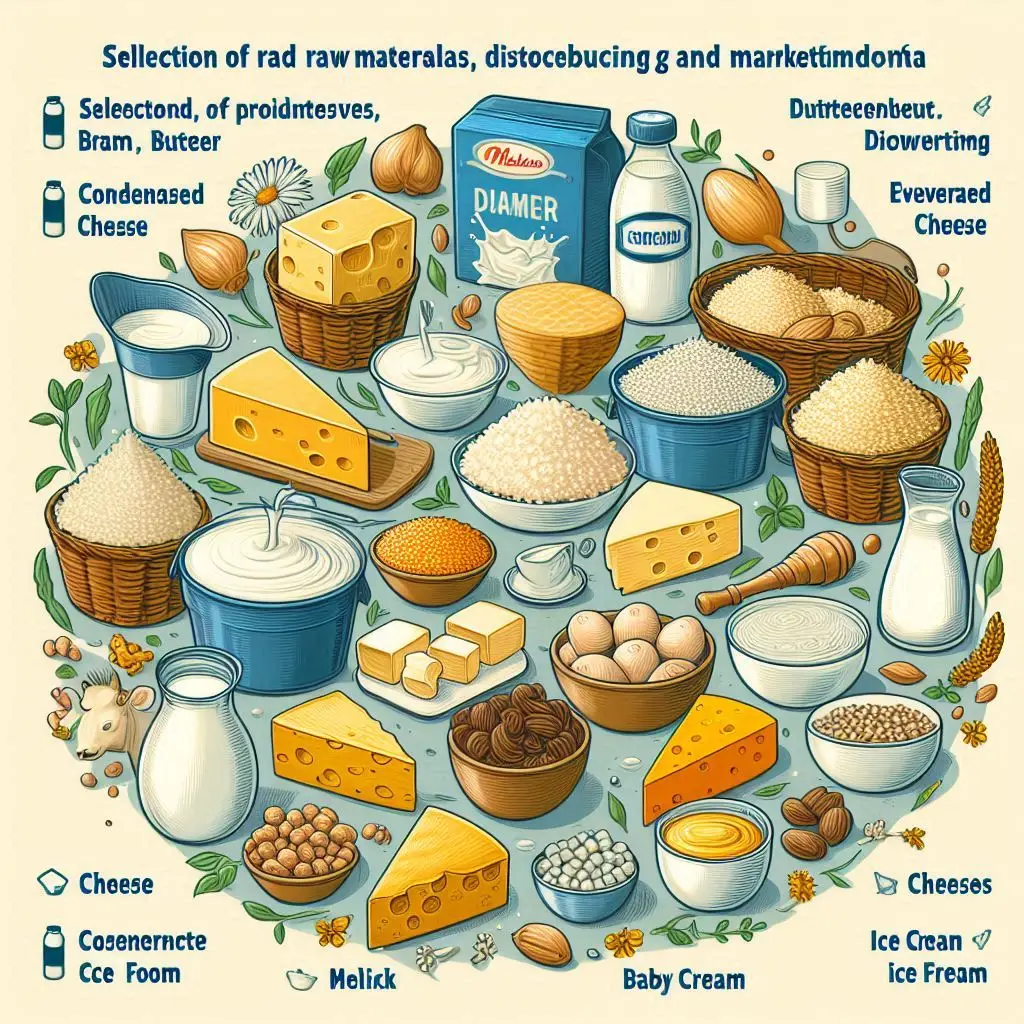Unlocking the Potential of Dairy By-Products

Introduction
The dairy industry generates various by-products during the manufacture of products like cheese, butter, and yogurt. By-products such as whey, buttermilk, lactose, and casein hold unique and valuable nutrients that can enhance the industry’s profitability. By effectively utilizing these by-products, dairy businesses can significantly improve their financial performance and contribute to societal welfare, especially in regions facing malnutrition.
Understanding Dairy By-Products
A dairy by-product refers to a product of commercial value produced during the manufacture of a main dairy product. As the economic importance of these by-products increases, some may even evolve into main products themselves.
Key Dairy By-Products
- Skim Milk: This by-product emerges during cream manufacture. Skim milk is rich in solids-not-fat (SNF) and offers high nutritional value. Dairy producers can use it for standardizing dairy products or preserving it in spray-dried form. Skim milk also serves as a base for producing casein, co-precipitates, protein hydrolysates, and other derived products.
- Buttermilk: This by-product results from butter manufacture. Producers can use buttermilk in both liquid and dried forms. Fermentation enhances its nutritional profile, allowing it to serve as a beverage called “chaas.” Additionally, manufacturers can dry buttermilk for use as an ingredient in various food products.
- Whey: Whey, a by-product of cheese and paneer production, offers a valuable source of nutrients. Producers can utilize whey in preparing sports drinks, beverages, and certain types of cheese like ricotta. Manufacturers can also derive whey proteins and lactose from whey.
- Ghee Residue: The residue left after ghee manufacture finds applications in preparing sweets, cookies, and chocolates.
- Casein and Casein Derivatives: Derived from skim milk, casein serves primarily in the bakery and confectionery industries. It also has applications in producing packaging films.
Utilization of Dairy By-Products
Effectively utilizing dairy by-products proves crucial for the profitability and sustainability of the dairy industry. Over the years, significant progress has occurred, especially in developed countries like the United States, Europe, Australia, and New Zealand.In India, the focus on utilizing dairy by-products gained momentum after the economic liberalization and delicensing of the dairy industry in 1993. Since then, several by-product-based dairies with large, automated, and continuous manufacturing plants have emerged. However, India still faces challenges in becoming a global player in this area.
Key Challenges
- Low Per Capita Availability of Milk
- Higher Proportion of Buffalo Milk
- Poor Quality of Raw Milk
- Lack of Organized Manufacture of Products
- Inadequate Technology and High Costs of New Technologies
- Insufficient In-House R&D and Proper Infrastructure
- Limited Availability of Indigenous Equipment and Plants
Despite these challenges, the Indian dairy industry makes strides in utilizing by-products. The following sections discuss the various products derived from dairy by-products and their applications.
Whey and Its Derived Products
Whey stands out as the most significant by-product of the dairy industry, transforming from a waste product into a valued co-product. Advances in membrane and ion-exchange technologies, along with a deeper understanding of whey, have driven the growth of whey technologies over the past 25 years.
Products Derived from Whey
- Whey Beverages: Manufacturers ferment whey to create whey beverages and yeast whey.
- Whey Protein Concentrates (WPC): Producers use WPCs in sports drinks, protein supplements, and various food products.
- Whey Protein Isolates (WPI): WPIs serve in medical and nutritional applications due to their high protein content and purity.
- Lactose: Lactose, the sugar found in whey, has applications in pharmaceuticals as a filler and binder. Manufacturers also use it to produce lactulose, a prebiotic in dietary supplements and medical applications.
- Whey Paste: Food producers use whey paste in preparing confectionery products.
- Dried Whey: Dried whey serves as an ingredient in various food products, including bakery items and infant formula.
- Ricotta Cheese: Manufacturers use whey in producing ricotta cheese, a soft cheese with a creamy texture.
Casein and Its Derived Products
Casein, the primary protein in milk, represents another important by-product of the dairy industry. It has a long history of technical use in industries producing paper, paints, plastics, and adhesives. Casein and its derivatives find applications across food and non-food sectors.
Products Derived from Casein
- Edible Casein: Producers use edible casein in making cottage cheese, quarg, and other cheese varieties.
- Caseinates: Manufacturers utilize caseinates as emulsifiers in bakery and confectionery products due to their excellent emulsifying properties. They also serve in producing infant formula and other food products.
- Casein Hydrolysates: Food scientists use casein hydrolysates in medical and nutritional applications, such as hypoallergenic infant formula and sports drinks.
- Casein Films: Casein-based films find applications in packaging, particularly in the food industry, due to their excellent barrier properties and biodegradability.
Buttermilk and Its Derived Products
Buttermilk, a by-product of butter manufacture, contains lactose, proteins, and minerals. Producers often ferment buttermilk to enhance its nutritional profile and functional properties. Additionally, buttermilk contains bioactive compounds that may offer health benefits, such as cholesterol-lowering effects and antimicrobial properties.
Products Derived from Buttermilk
- Cultured Buttermilk: Producers ferment buttermilk to create a beverage known as “chaas” or cultured buttermilk.
- Condensed Buttermilk: Manufacturers concentrate buttermilk to produce condensed buttermilk.
- Dried Buttermilk: Dried buttermilk serves as an ingredient in various food products, including bakery items and infant formula.
- Soft Cheese: Producers can use buttermilk in making soft cheese varieties.
Skim Milk and Its Derived Products
Skim milk, a by-product of cream manufacture, boasts high nutritional value due to its rich solids-not-fat (SNF) content. Manufacturers can use skim milk for standardizing dairy products or preserving it in spray-dried form. Skim milk also serves as a base for producing casein, co-precipitates, protein hydrolysates, and other derived products.
Products Derived from Skim Milk
- Flavored Milk: Producers use skim milk to create flavored milk beverages.
- Sterilized Flavored Milk: Manufacturers sterilize and flavor skim milk to produce shelf-stable flavored milk products.
- Cottage Cheese and Quarg: Producers coagulate skim milk to create cottage cheese and quarg, a type of fresh cheese.
- Casein and Caseinates: Skim milk serves as the primary source for producing casein and caseinates, which have a wide range of applications in the food and non-food sectors.
Ghee Residue and Its Derived Products
Ghee residue, the by-product of ghee manufacture, finds applications in preparing sweets, cookies, and chocolates. Producers can process ghee residue into various products, such as sweetmeats, toffees, and sweet pastes.
Conclusion
Effectively utilizing dairy by-products proves crucial for the profitability and sustainability of the dairy industry. By-products such as whey, buttermilk, lactose, and casein contain unique and valuable nutrients that can transform into a wide range of products for various industries. While significant progress has occurred in utilizing dairy by-products, particularly in developed countries, the Indian dairy industry still faces challenges.
For more pearls of Vets Wisdom:
https://wiseias.com/partitioning-of-food-energy-within-animals/





Responses